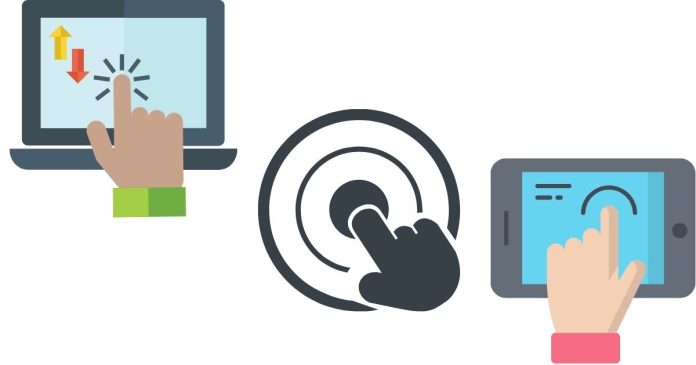A touchpad, also known as a trackpad, is a pointing device commonly used as an input tool in laptops, notebooks, and other portable devices. It is a flat, rectangular surface that detects finger movements and converts them into on-screen pointer actions, similar to how a computer mouse functions. Touchpads provide a convenient and space-efficient alternative to traditional mice, making them an integral part of modern portable computing devices.
This article explains the functionality, features, and advantages of touchpads, as well as their evolution in the tech industry.
Definition of a Touchpad
A touchpad is a built-in input device designed to detect tactile gestures and movements. It uses a pressure-sensitive or capacitive surface to track finger motions, allowing users to move the on-screen cursor, scroll, zoom, and perform various gestures.
Touchpads are often paired with physical or virtual buttons located near or below the surface to perform click functions, although modern touchpads may also incorporate tap-to-click and multi-touch gestures.
How Does a Touchpad Work?
Touchpads operate using one of two primary technologies:
1. Capacitive Technology
Most modern touchpads use capacitive sensing technology. This method detects changes in the electrical field when a finger touches the surface. Since the human body conducts electricity, the touchpad identifies the location of the touch and translates it into pointer movements or gestures.
2. Resistive Technology
Older touchpads used resistive technology, which relies on physical pressure to make electrical contact between two conductive layers. While durable, resistive touchpads are less sensitive and lack multi-touch support.
Features of a Touchpad
- Pointer Control: Move the on-screen cursor by sliding a finger across the touchpad.
- Clicking: Tap the surface to mimic mouse clicks or use integrated physical buttons.
- Scrolling: Use two-finger scrolling or dedicated scroll areas to navigate documents or webpages.
- Multi-Touch Gestures: Modern touchpads support gestures like pinch-to-zoom, three-finger swipes, and four-finger taps.
- Customization: Users can adjust sensitivity, gesture functionality, and pointer speed through software settings.
Types of Touchpads
- Standard Touchpads
These are basic touchpads that support simple pointer movement and single-click functions. They are typically found in older laptops. - Multi-Touch Touchpads
Found in modern laptops, these support advanced gestures such as pinch-to-zoom, three-finger swipe for task switching, and two-finger scrolling. Examples include Apple’s Force Touch trackpad and Microsoft Precision touchpads. - Force Touch/Pressure-Sensitive Touchpads
Apple introduced the Force Touch trackpad, which detects varying levels of pressure, enabling additional features based on how hard a user presses. - Integrated Touchpads
These are touchpads integrated with other input systems, such as virtual keyboards or specialized surfaces on gaming laptops.
Advantages of a Touchpad
- Compact Design: Touchpads eliminate the need for a separate mouse, saving space.
- Portability: Ideal for laptops and other portable devices.
- User-Friendly: Intuitive to use and easy to learn.
- Multi-Touch Gestures: Enhance productivity with advanced gesture controls.
- Durability: Touchpads are generally robust and have fewer moving parts compared to a mouse.
Disadvantages of a Touchpad
- Limited Precision: A mouse offers more precise control, especially for tasks like graphic design or gaming.
- Learning Curve: Some users may find touchpads less intuitive than a mouse.
- Finger Fatigue: Extended use can lead to discomfort.
- Sensitivity Issues: Improper configuration can result in unintentional cursor movements.
Applications of a Touchpad
- Laptops and Notebooks: Touchpads are a standard feature in portable computers.
- Tablets and Hybrids: Detachable keyboards for tablets often include built-in touchpads.
- Pointing Devices: Touchpads are used in specialized devices like industrial machines, kiosks, and medical equipment.
Evolution of Touchpads
The first touchpads were introduced in the early 1990s by Cirque Corporation. Over the years, touchpads have evolved to include multi-touch functionality, gesture recognition, and pressure sensitivity. Companies like Apple, Synaptics, and Microsoft have significantly improved touchpad technology, ensuring smoother, more accurate interactions.
Touchpads are essential input devices in portable computing, offering convenience, versatility, and a compact alternative to traditional mice. With advancements in multi-touch and gesture-based technology, touchpads continue to improve user experience, making them indispensable in modern laptops and hybrid devices.


